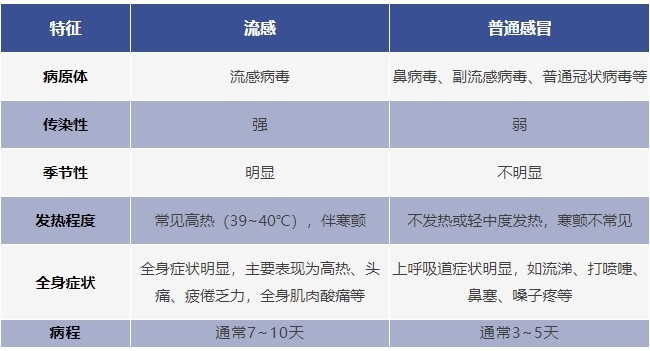Influenza season is coming: how to distinguish influenza from common cold? How to prevent multiple diseases together?
Influenza, as we often say, is an acute respiratory infectious disease caused by influenza virus, which usually causes many people to be infected in a certain season or time period, with obvious seasonality. According to the estimation of the World Health Organization, the seasonal epidemic of influenza virus can lead to an average of about 3 million to 5 million severe cases and 290,000 to 650,000 respiratory disease-related deaths worldwide every year.
Today, let’s talk about the difference between influenza and common cold, why respiratory infectious diseases are prone to occur in autumn, winter, winter and spring, what are the common respiratory infectious diseases, and how to jointly prevent respiratory infectious diseases.
1. What’s the difference between the flu and the common cold?
Although influenza and common cold are both respiratory diseases, they are completely different. The follow table lists that difference between influenza and common cold:

Second, why are respiratory infectious diseases prone to high incidence in autumn and winter and winter and spring?
Mainly includes the following reasons: First, the cold season is more conducive to the survival of most pathogens; Second, doors and windows are often closed in autumn, winter, winter and spring, and indoor air circulation is reduced. Once there is a source of infection, it is easy to cause the spread of diseases; Third, the resistance of nasal mucosa decreases in cold season, and pathogens are more likely to invade the human body; Fourth, there are many indoor activities in the cold season, which increases the chance of infection.
3. What are the common respiratory infectious diseases?
Common respiratory infectious diseases include influenza, Covid-19 infection, measles, mumps, rubella, chickenpox, epidemic cerebrospinal meningitis, whooping cough and mycoplasma pneumoniae infection. With the coming of autumn and winter, influenza activities may increase, and the risk of cluster epidemics in schools and other crowded places will increase. The risk of common or alternate epidemics of mycoplasma pneumoniae infection, respiratory syncytial virus infection, adenovirus infection, common coronavirus infection and rhinovirus infection is high.
Fourth, how to carry out multi-disease prevention of respiratory infectious diseases?
Vaccination is the most economical and effective way to prevent infectious diseases. At present, the respiratory infectious diseases that can be prevented by vaccines in China include influenza, measles, mumps, rubella, chickenpox, epidemic cerebrospinal meningitis, whooping cough, diphtheria, pneumococcal infection and Haemophilus influenzae infection. At present, it is the best time for influenza vaccination. All people aged 6 months and above who have no vaccination contraindications can get influenza vaccination, especially the elderly, children, patients with chronic basic diseases and other high-risk groups.
Taking daily protection and public health measures can also effectively achieve multi-disease prevention of respiratory infectious diseases, including:
1. Pay attention to cough etiquette and hand hygiene, and develop good hygiene habits;
2. Enhance physical fitness, pay attention to balanced nutrition, improve physical resistance and develop a healthy lifestyle;
3. Try to go to crowded public places as little as possible, especially closed places with poor air flow;
4. Reduce contact with people with respiratory symptoms, and pay attention to personal protection when contacting;
5. Do a good job in indoor ventilation.